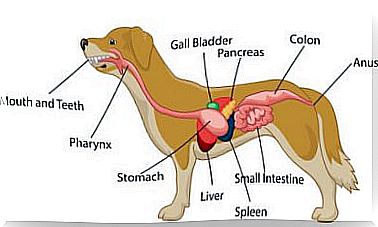Deadly Diseases In Cats And Dogs

Deadly diseases in cats and dogs are a concern for all owners. It is important to know the most lethal pathologies that can affect our pets, to know how to recognize their symptoms and go immediately to the vet.
Deadly diseases in cats and dogs
The 3 deadly diseases in cats
Feline leukemia
Feline leukemia is considered a pandemic, due to the radical increase in diagnosed cases around the world. It is a severe viral disease caused by an oncovirus known as FeLV or FeLV (Feline Leukemia Virus). It can affect cats of all ages, but it is more common in young felines.

FeLV is transmitted primarily by direct contact with the blood or body fluids of infected animals, but it can also be present in saliva, urine, and feces. For this reason, stray cats or those that live in feline communities are especially vulnerable to this pathology.
The main symptoms of feline leukemia are :
- Alteration of the respiratory rhythm.
- Loss of appetite and weight.
- Fever.
- Soft spot.
- Severe anemia
- Yellow ulcers in the mouth and mucous membranes.
Feline AIDS (Feline Immunodeficiency)
Feline AIDS is a viral disease transmitted by a lentivirus called FIV or FIV (Feline Immunodeficiency Virus). It is spread through direct contact with the blood of infected animals.

The main symptoms of feline AIDS are:
- Fever.
- Diarrhea.
- Gingivitis.
- Loss of appetite and weight.
The pathology is more frequent in unsterilized felines; it is usually acquired during the reproductive act or in street fights. This can be the gateway for many diseases that seriously threaten the life of the cat.
Renal insufficiency
Kidney failure is among the most common causes of death in domestic cats. It is a severe chronic disease that leads to irreversible loss of kidney function.

Its diagnosis is very difficult, since the decline in renal activity has unspecific symptoms. Differential clinical signs are estimated to appear when the kidneys have more than 80% of their tissues compromised.
The main symptoms of kidney failure are:
- Increased water consumption and urination.
- Loss of grooming habits.
- Depression.
- Loss of appetite and weight.
- Vomiting and ulcers on the mucous membranes.
The 3 deadly diseases in dogs
Parvovirus
Parvovirus is an acute and severe viral disease, with very high rates of infection. It occurs frequently in puppies and young dogs, but it can affect animals of all ages. The main form of transmission is from direct contact with contaminated animal feces. It usually lodges in the mucous membranes of the digestive tract, which are in constant reproduction.

Therefore, the main symptoms of parvovirus are similar to those of gastrointestinal problems, such as:
- Vomiting
- Loss of appetite
- Diarrhea, usually accompanied by blood and mucus.
- Dehydration and malnutrition.
- Abdominal pain.
- Depression and lethargic state.
- Fever.
Canine distemper
Distemper or distemper is one of the leading causes of death among dogs. It is an acute and highly contagious viral disease, which is transmitted mainly by inhalation of the pathogen. Puppies between six and twelve months of age are the most affected.

The canine distemper virus reproduces very quickly in the body, so they spread to various tissues and organs. It affects the brain, skin and conjunctival cells, as well as the mucous membranes of the digestive and respiratory tracts.
The main symptoms of canine distemper are :
- Lethargy.
- Fever.
- Malnutrition and dehydration.
- Dry cough.
- Yellow, sticky discharge from the eyes and nose.
- Vomiting and diarrhea
- Encephalitis.
Stomach twisting
Stomach torsion is the leading non-infectious cause of death in dogs, and is considered a veterinary emergency. It is characterized by the accumulation of gases and liquids in the stomach, which can rotate on its own longitudinal axis. It can affect dogs of all breeds and ages, but is more common in large ones.

The phenomenon of rotation ‘seals’ the stomach, which prevents proper blood circulation and oxygenation of this organ. Unfortunately, when this happens there is no remedy for the life of the animal.
The first symptoms of stomach torsion are: abdominal bloating, nausea and vomiting, excessive salivation and restlessness. In more advanced cases, the animal has pale gums and mucous membranes, accelerated respiratory and heart rates.









